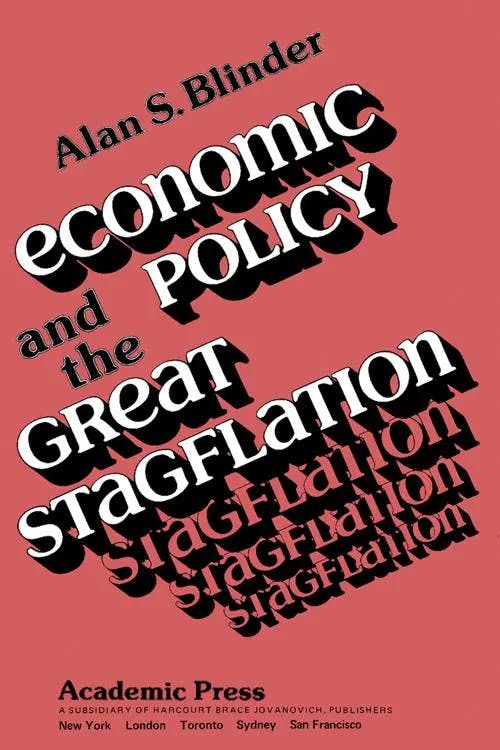What is Fordism?
MA, Sociology (Freie Universität Berlin)
Date Published: 15.03.2023,
Last Updated: 03.08.2023
Share this article
Defining Fordism & Fordist Production
Most are probably familiar with the Ford Motor Company, and many with its eponymous founder, Henry Ford, but why does the name get its own -ism within academic circles and beyond? Indeed, this famous automobile brand has been more influential than the sum of its parts.
To answer the question of what Fordism is we’d have to begin in 1914, with the assembly of the Model T car; one of the first successfully mass-produced automobiles. To achieve this feat, Henry Ford implemented a style of production characterized by principles of standardization, specialization, intensification, and rationalization. These principles are, in essence, what has come to define Fordism. But what did these principles actually look like in practice?
Standardization: The Model T was built from a set of identical and interchangeable parts made in factories through molds and machines, resulting in equally identical products that could be assembled en masse. Under the Fordist production process, nothing was handmade or left up to artisanry.
Specialization: To manufacture the Model T, these standardized parts were moved along a conveyor belt, and put together piece by piece in what became known as assembly line production. The assembly process was broken down into constituent parts so that each of a string of workers could simply repeat the same task without needing a wider technical knowledge of automobile production.
Intensification: Through assembly line production, the exact same Model T car could be produced in huge quantities and at unprecedented speed. The same process was then applied to the manufacturing of a whole host of consumer products from TV sets to tables, textiles, and washing machines. This enabled the emergence of economies of scale, where commodities could be produced for cheaper in bulk, paving the way for new frontiers in mass consumption.
Rationalization: To maintain the Fordist production process, workers no longer needed to be skilled, but disciplined, as their work relied less on craftsmanship and more on the ability to repeat the same monotonous tasks over and over again. For Ford, this level of self-discipline and conformity extended not only to the production process itself, but also to the way that workers were managed and even how they conducted themselves outside of work and in their home lives.
Below is some footage of the Model T assembly line from 1924:
Ford’s production process espoused a new industrial paradigm that could be replicated across industries, marking a step toward a more advanced stage of capitalism.
As Stefan J. Link highlights in his book, Forging Global Fordism (2020),
What [economic historian] Gottl-Ottlilienfeld saw in Fordismus was not just a system of production but a historical shift in the relationship between economy and society, the promise of a reconciliation between industrial efficiency and social community.
Stefan J. Link
What [economic historian] Gottl-Ottlilienfeld saw in Fordismus was not just a system of production but a historical shift in the relationship between economy and society, the promise of a reconciliation between industrial efficiency and social community.
Indeed, the influences of Fordism extended beyond the economy and into other spheres of life including family, culture and politics.
The Keynesian welfare state and Fordism
One key way that Fordism extended beyond the factory floor was in its intermingling and increasing reliance on the Keynesian welfare state, something which has fascinated scholars of political economy over the last several decades. Introduced by the work of economist John Maynard Keynes, the idea was that governments could intervene to regulate supply and demand in order to remedy some of the inherent crisis tendencies of capitalism, an object of major concern following the varied economic and political instability of the day.
According to M.G. Hayes in his book, John Maynard Keynes (2019),
The Keynesian era can be defined as a period of three decades – les trente glorieuses – during which western governments were committed to full employment. The beginning of the period was marked by the United Kingdom's 1944 White Paper on Employment Policy and by the United States’ 1946 Full Employment Act. Its end came shortly after the breakdown of the Bretton Woods exchange rate system and the subsequent oil crisis in 1973–4.
M. G. Hayes
The Keynesian era can be defined as a period of three decades – les trente glorieuses – during which western governments were committed to full employment. The beginning of the period was marked by the United Kingdom's 1944 White Paper on Employment Policy and by the United States’ 1946 Full Employment Act. Its end came shortly after the breakdown of the Bretton Woods exchange rate system and the subsequent oil crisis in 1973–4.
Particularly following the Great Depression and WWII, the era of Fordism reached its maturity alongside conscious policy decisions by the likes of President Franklin Delano Roosevelt who famously asserted that it was necessary to “save capitalism in spite of the capitalists.” Contrary to ideologies around the so-called self-regulating market, the state played a critical role in creating the conditions necessary for Fordism to function and flourish.
The Keynesian welfare state regulated capitalism, among other things, through massive endeavors in public spending in the post-war years, particularly in terms of urban development and other infrastructural projects. Some examples with regard to Ford’s automobiles were the construction of highways, dismantling of public transportation, and the promotion of suburbanization. In turn, carrying out these infrastructural projects both helped to maintain high levels of employment and significantly increased reliance on the purchase of motor vehicles. The state also regulated the market by cyclically raising corporate taxes when the economy was doing well. This was in order to prevent inflation and incentivise public spending in line with the aforementioned projects.
Fordism, American labor, and the class compromise
In this way, what enabled Fordism to function was a consciously regulated balance of different forces including the capitalists, the state, and critically, the industrial labor force. Indeed, no discourse on Fordism could be complete without addressing the historically distinct ways in which it affected American labor specifically – something which can be summarized through the emergence of a concept known as the class compromise.
In his book, State Theory (2013), preeminent scholar of Fordism, Bob Jessop, characterizes the class compromise under Fordism and the Keynesian welfare state as follows,
In general, they [Keynesian economists] argue that regimes of accumulation will be stable to the extent that they can provide specific means of mobilizing counter- tendencies to the various generic and specific crisis-tendencies of a given stage of capitalism. Modes of regulation reinforce and underpin these regimes by institutionalizing class struggle and confining it within certain parameters compatible with continuing accumulation. Neither of these social accomplishments can be taken for granted and their improbable discovery is always a product of social and political struggles which stabilize for a time around specific forms of institutionalized class compromise which shape the interests of all classes into conformity with the accumulation regime.
Bob Jessop
In general, they [Keynesian economists] argue that regimes of accumulation will be stable to the extent that they can provide specific means of mobilizing counter- tendencies to the various generic and specific crisis-tendencies of a given stage of capitalism. Modes of regulation reinforce and underpin these regimes by institutionalizing class struggle and confining it within certain parameters compatible with continuing accumulation. Neither of these social accomplishments can be taken for granted and their improbable discovery is always a product of social and political struggles which stabilize for a time around specific forms of institutionalized class compromise which shape the interests of all classes into conformity with the accumulation regime.
The capitalist social order is generally defined by a struggle between the opposing interests of labor and capital. Therefore, the fact that much of the Keynesian welfare state was oriented around making concessions to workers under the class compromise is actually quite a peculiar phenomenon, but there were good reasons for it.
As we noted above, the Fordist industrial process represented a significant step in the development of capitalism, characterized by rationalization, intensification, specialization, and standardization. These shifts made new demands of workers, as the turn toward assembly line production (sometimes referred to as the Fordist Production Model) meant the deskilling of the labor force that decreasingly relied upon technical knowledge or craftsmanship. Still, labor power was vital in operating assembly line production, and it required intense discipline and conformity to endure the humdrum of work that became increasingly alienating, depersonalized, and monotonous.
In return, another crucial function of the Keyesian welfare state was in its capacity to make concessions to the labor force that would make their participation in the Fordist production process more palatable. To do so, the government encoded into law a number of workers’ demands, as put forth by industrial unions, such as ensuring pension schemes and decent wages. Thus, part of saving capitalism from the capitalists involved placating the interests of the labor force to keep them on board with what was otherwise rather boring and unfulfilling work. In fact, this became so widely accepted that these entitlements became deeply intertwined with conceptions of citizenship and nationalism under Fordism.
Furthermore, mass production required mass consumption. To enable a consumer base that could reliably buy all the shiny new products on the market, Ford himself was a big proponent of raising wages to grow the middle class. As a result, the wages that a single breadwinner earned working in a factory during Fordism could support a whole family, and it enabled them to buy the consumer gadgets and gizmos that the Fordist model was mass producing.
Everyday life under Fordism
This brief period of symbiosis between capitalists, labor, and the state remains subject to much nostalgia in political discourse today, as wages have since stagnated while costs of living have steadily been on the rise. Think of the times when people used to work the same job for 40 years, could buy a house, feed a family of five, and then retire with a good pension – all on a single income. Particularly in the post-war years of the Baby Boom, Fordism was also the time of the nuclear family. Dad would work in the factory and come home to a dutiful housewife who now had access to a whole range of consumer products mass marketed to offer convenience and a slice of the good (middle class) life in the suburbs.
Yet, much like the fact that we now know there was more to meet the eye behind these kinds of idyllic images, the good times of Fordism for American labor also bear their illusions. For one, while much effort was made via the welfare state and even the capitalists to ensure decent wages, pensions, a house in the suburbs, and financial access to a whole host of new consumer products, the class compromise came at a cost. The Fordist era was a time of much repression.
As Italian philosopher Antonio Gramsci writes of this in his essay, “Americanism and Fordism” (1971), Fordism amounted to,
The biggest collective effort to date to create, with unprecedented speed and with a consciousness of purpose unmatched in history, a new type of worker and a new type of man.
John Schwarzmantel
The biggest collective effort to date to create, with unprecedented speed and with a consciousness of purpose unmatched in history, a new type of worker and a new type of man.
That was himself as standardized and disciplined as the assembly line production process. For Gramsci, the Fordist production process, therefore, became “inseparable from a specific mode of living and thinking and feeling life.” This extended to topics like sexuality, alcohol consumption, morality, and consumerism.
Ford even constructed towns around his factories and subjected workers – often recruiting immigrants – to rigid moral standards, even going so far as to surveil them in their home lives. As David Harvey echoes in his chapter “Fordism” in his book The Condition of Postmodernity (1990),
In 1916, Ford sent an army of social workers into the homes of his ‘privileged’ (and largely immigrant) workers to ensure that the ‘new man’ of mass production had the right kind of moral probity, family life, and capacity for prudent (i.e. non-alcoholic) and ‘rational’ consumption to live up to the corporate needs and expectations.
From this time, Taylorism, a scientific approach to management which emerged alongside Fordism also went as far as to pick through employees' trash in order to monitor their behaviors and ensure they were conforming to the kind of persona that the production process required (Fuchs, 2012).
Moreover, Fordism coincided with McCarthyism, an ideological war intent on snuffing out political radicals that might threaten the balance. In fact, much of Ford’s ideological engineering of his employees happened under the banner of promoting “American Values.” Meanwhile, although much of this industrial labor force was heavily unionized during this time, enabling major concessions of the class compromise, these institutions were also subject to depoliticization, bureaucratization, and a staunch pressure to stamp out their more radical roots of labor organizing (Harvey, 1990).
Race, class, and gender under Fordism
Finally, while this period is subject to much nostalgia today – particularly in the rightwing discourse of slogans like MAGA (Make America Great Again) – the affinity of certain white nationalist groups reflects that during this time, the beneficiaries of the class compromise were highly stratified.
For one, labor itself was segmented between blue collar factory workers and white collar middle management. Within the ranks for the blue collar, there were often tensions brewing along racial and ethnic lines. For example, the immigrant labor force was often subject to much nativist strife and suspicion. Moreover, the processes of suburbanization associated with this period were highly racialized, barring access to African Americans and other minority groups who, due to redlining, were all but sequestered in cities despite an exodus of an emergent white middle class (Smith, 1996). Finally, the role of women during the era of Fordism as good homemakers and – by extension – consumers was notoriously an oppressive one that relegated them to the home and conditioned them to conform to strict gender roles as mothers, wives, and homemakers.
Therefore, despite efforts to create and maintain the kind of disciplined labor force required to meet the demands of the Fordist production process, there were often cracks in the seams. From this era, for instance, the Second Wave Feminist movement emerged as women challenged their place in the social milieu. For instance, Betty Friedan’s Feminist Mystique published in 1963 was a direct indictment of women’s place in the home during the Fordist years. It also coincided with the Civil Rights Movement and other forms of social unrest surrounding the free love and other nonconformist movements of the 1960s. While each of these movements are complex and multifaceted, Fordism’s decline was marked, among other things, by the resistance and disenchantment of the working class with the way life was structured during the decades following WWII.
What happened to Fordism? The Crisis of 1973
The delicate balance between different actors (state, capital, and labor) as summarized in the class compromise was a defining feature of Fordism, and scholars chart this era’s decline to when its market-constraining effects were no longer compatible with the ever-changing requirements of capitalism. Specifically, the Fordist mode of production – particularly in its nationalist, Keynesian iterations – began to recede when the economy went into crisis in 1973.
In fact, some of the very same qualities that enabled the economy to flourish under Fordism ultimately generated new problems over time. For instance, the more efficient industrial processes that enabled mass production created a market that was oversaturated with consumer products. This led to a decline in profit rates as commodity production began to outpace consumer demand. By the 1970s, the economy was also plagued by “stagflation,” thanks to an overaccumulation of wealth generated from the post-war economic boom.
As Alan Blindly defines it in his book, Economic Policy and the Great Stagflation (2013),
Stagflation is a term coined by our abbreviation-happy society to connote the simultaneous occurrence of economic stagnation and comparatively high rates of inflation. While the coexistence of these two maladies is in fact not quite as unique as was originally thought, there is no question that the virulence of the stagflation that afflicted us in the mid 1970s was unprecedented.
Alan S. Blinder
Stagflation is a term coined by our abbreviation-happy society to connote the simultaneous occurrence of economic stagnation and comparatively high rates of inflation. While the coexistence of these two maladies is in fact not quite as unique as was originally thought, there is no question that the virulence of the stagflation that afflicted us in the mid 1970s was unprecedented.
In response to these new problems, the economy had to restructure itself and the state was forced to follow suit by scaling back on public spending. Much of the decline of Fordism due to the crisis of 1973 gave rise to outsourcing, automation, flexibilization, financialization, and globalization – features of neoliberal capitalism that have remained prevalent to this day.
Fordism outside the United States
While Fordism is primarily associated with a temporally and spatially specific type of 20th- century American capitalism, it was also the object of fascination and even emulation by an interesting host of scholars and societies abroad.
In his aforementioned essay, Antonio Gramsci speaks with great interest about how the American project enabled this advanced level of rationalist capitalism, which he argues is something unique to a society that has only recently been settled and was never governed by feudalism. In particular, he writes about the emergence of a new capitalist class of entrepreneurs like Ford as being distinct from the more blended and staggered post-feudal landscape of Europe, which was still plagued by “parasitic” landed gentry. In this respect, Gramsci was especially concerned with whether Fordism could catch on abroad. He reflects,
The problem is rather this: whether America, through the implacable weight of its economic production (and therefore, indirectly), will compel or is already compelling Europe to overturn its excessively antiquated economic and social basis. This would have happened anyway, though only slowly. In the immediate perspective it is presented as a repercussion of American superpower. (1971)
John Schwarzmantel
The problem is rather this: whether America, through the implacable weight of its economic production (and therefore, indirectly), will compel or is already compelling Europe to overturn its excessively antiquated economic and social basis. This would have happened anyway, though only slowly. In the immediate perspective it is presented as a repercussion of American superpower. (1971)
While Gramsci was writing in the interwar period, this question became especially prevalent during World War II when mass production to meet the mobilization efforts became a necessity. Despite the fact that Fordism and Taylorism were resisted by Western European trade unionists, these gripes often didn’t hold up in front of the industrial requirements of the war effort. Moreover, as the United States continued to expand its economic spheres of influence in Europe following the war, there was a further expansion of the Fordist production process abroad as well.
These can be seen in numerous and far reaching iterations including Toyotism in Japan, which emphasized the importance of organizational culture as a key part of the production process. Perhaps most surprisingly, Stalin and Lenin were also fascinated with the Fordist mode of production and not so subtly sought to emulate it as a means of accelerating processes of industrialization as part of the infamous Five Year Plan.
As Owen Hatherley argues in his book, The Chaplin Machine (2016), the Soviet Union’s fixation on Fordism even permeated the regime’s tastes in art and film. This is evidenced in the popularity of Chaplin’s Modern Times,
... the Young Communist League has prefigured the critique of Fordism and Taylorism that the man himself [Chaplin] would make in his 1936 film Modern Times. But what if scientific management and slapstick comedy were not actually antipodes at all, but instead were closely linked and complementary phenomena?
Owen Hatherley
... the Young Communist League has prefigured the critique of Fordism and Taylorism that the man himself [Chaplin] would make in his 1936 film Modern Times. But what if scientific management and slapstick comedy were not actually antipodes at all, but instead were closely linked and complementary phenomena?
Beyond the Soviet interest in assembly line imagery, references to Fordism made many iconic appearances in 20th-century popular culture.
Examples of Fordism in Popular Culture
Fordism had a significant impact on the aesthetics of the day, with examples showing up in modern art, design, and architecture that embodied its rationalism and utilitarianism. Oftentimes, these tendencies in cultural production were directly implicated by the fact that so many objects were mass produced through the Fordist production process itself (Harvey, 1990).
Moreover, renditions of the assembly line in literature, film, and television typically made critique or satire about the human cost of discipline and monotony that was required of the labor force at this time. Some of the most iconic examples of the Fordist production process in the media include:
Brave New World (1932): Aldous Huxley was fixated on the assembly line production process and the consequences of the rationalization of man. He speaks to this in this dystopian novel wherein human beings are themselves produced on the assembly line, and efficiency, mass production, and consumerism are valued above all (Lohnes, 2022).
Modern Times (Chaplin, 1936): As noted above, Charlie Chaplin satirized the assembly line in his 1936 expressionist film by appearing coyish, effeminate, and downright silly juxtaposed against the monotony of the stereotypically masculine industrial workers of the day.
I Love Lucy (1952): Lucy and Ethel briefly have a stint at the candy factory where they famously become backlogged and hilariously attempt to remedy the situation by eating the candy off the conveyor belt.
Closing thoughts
As we have seen, Fordism extended far beyond assembly line production in the automobile plant. It comprised a distinct period in capitalist political economy characterized by a balance of interests between capital, labor, and the state that briefly – if only ostensibly and unevenly – seemed to remedy some of capitalism’s contradictions and crisis tendencies.
The class compromise under Fordism may have ensured higher wages, labor protections, and unprecedented access to consumer products for American labor. Yet, it also demanded workers’ transformation into highly disciplined, rational subjects able to withstand the alienating and monotonous work required of them. Moreover, in reality, the social landscape under Fordism remained highly stratified across race, gender, and nationality. Additionally, Fordism had a major impact on daily life; from aesthetics and culture to consumption and the nuclear family. It was also the subject of fascination, critique, and in some rather unexpected cases, emulation abroad.
Finally, despite the gains that this time Fordism afforded American labor, this period’s distinguishing features of class compromise were not sustainable with the ever-changing requirements of capitalism. This is evidenced by the financial crisis of 1973, which precipitated major restructuring in line with the turn away from Fordism and the Keynesian welfare state toward neoliberalism and the market fundamentalism of the ensuing decades.
Scholars associated with Fordism
Bob Jessop, John Maynard Keynes, Antonio Gramsci, Karl Polanyi
Further Fordism reading on Perlego
Joe Soss, Disciplining the Poor
Capital, Class & Technology in Contemporary American Culture
The Routledge Guidebook to Gramsci's Prison Notebooks
Karl Polanyi's Political and Economic Thought
Bibliography
Fuchs, C. (2012). Political economy and surveillance theory. Critical Sociology, 39(5), 671–687. https://doi.org/10.1177/0896920511435710
Gramsci, A. (1971). Selections from the Prison Notebooks. London: Lawrence and Wishart
Harvey, D. (1990). The Condition of Postmodernity: An Enquiry into the Origins of Cultural
Change. Cambridge, MA: Blackwell
Jessop, B. (2002). The Future of the Capitalist State. Cambridge, UK: Polity Press
Lohnes, K. (2022, November 9). Brave New World. Encyclopedia Britannica. https://www.britannica.com/topic/Brave-New-World
Polanyi, K. (2001). The Great Transformation. Boston, MA: Beacon Press
Smith, N. (1996). The New Urban Frontier: Gentrification and the revanchist city. New York: Routledge
What is a simple definition of Fordism?
What is an example of Fordism?
Who was Henry Ford?
MA, Sociology (Freie Universität Berlin)
Lily Cichanowicz has a master's degree in Sociology from Freie Universität Berlin and a dual bachelor's degree from Cornell University in Sociology and International Development. Her research interests include political economy, labor, and social movements. Her master's thesis focused on the labor shortages in the food service industry following the Covid-19 pandemic.






